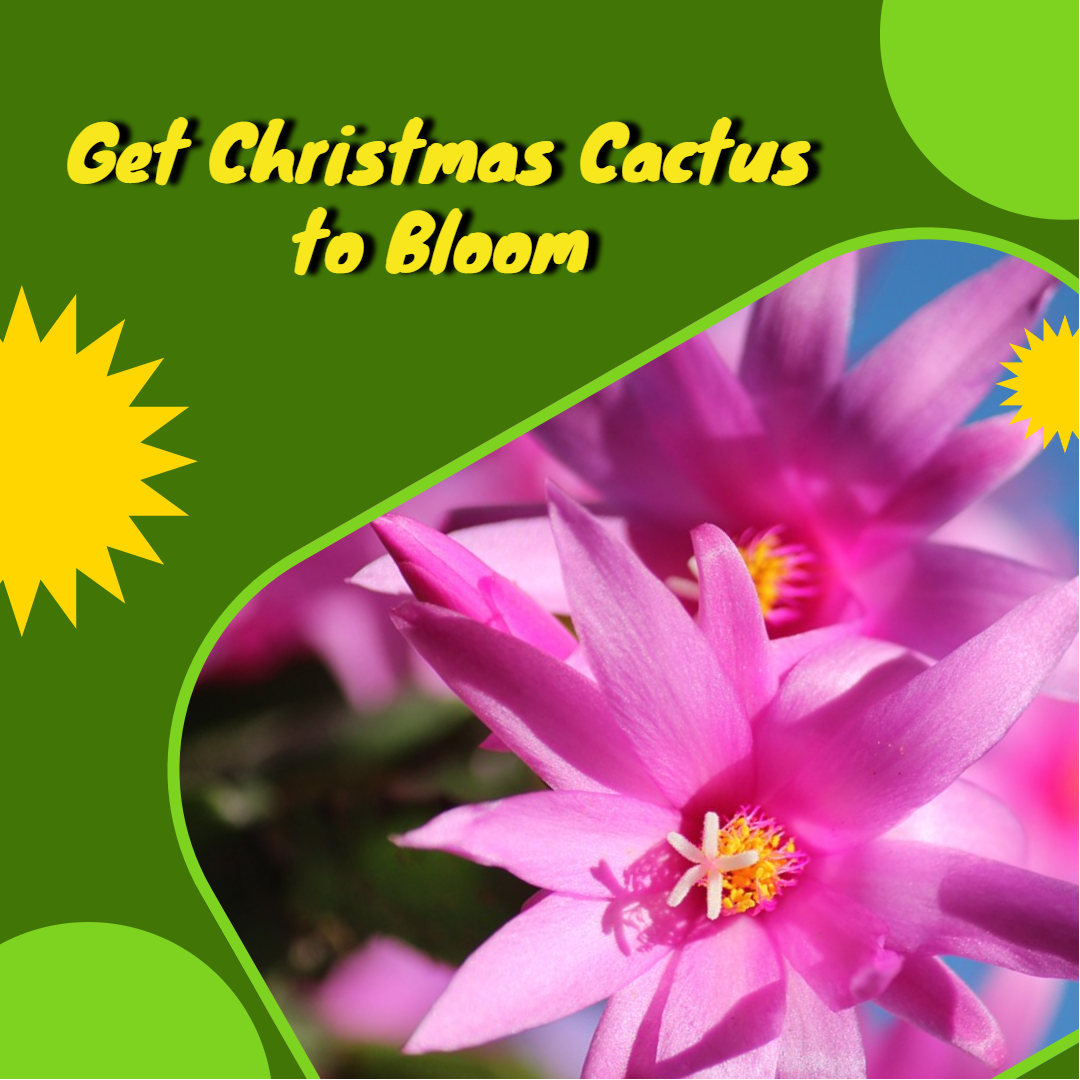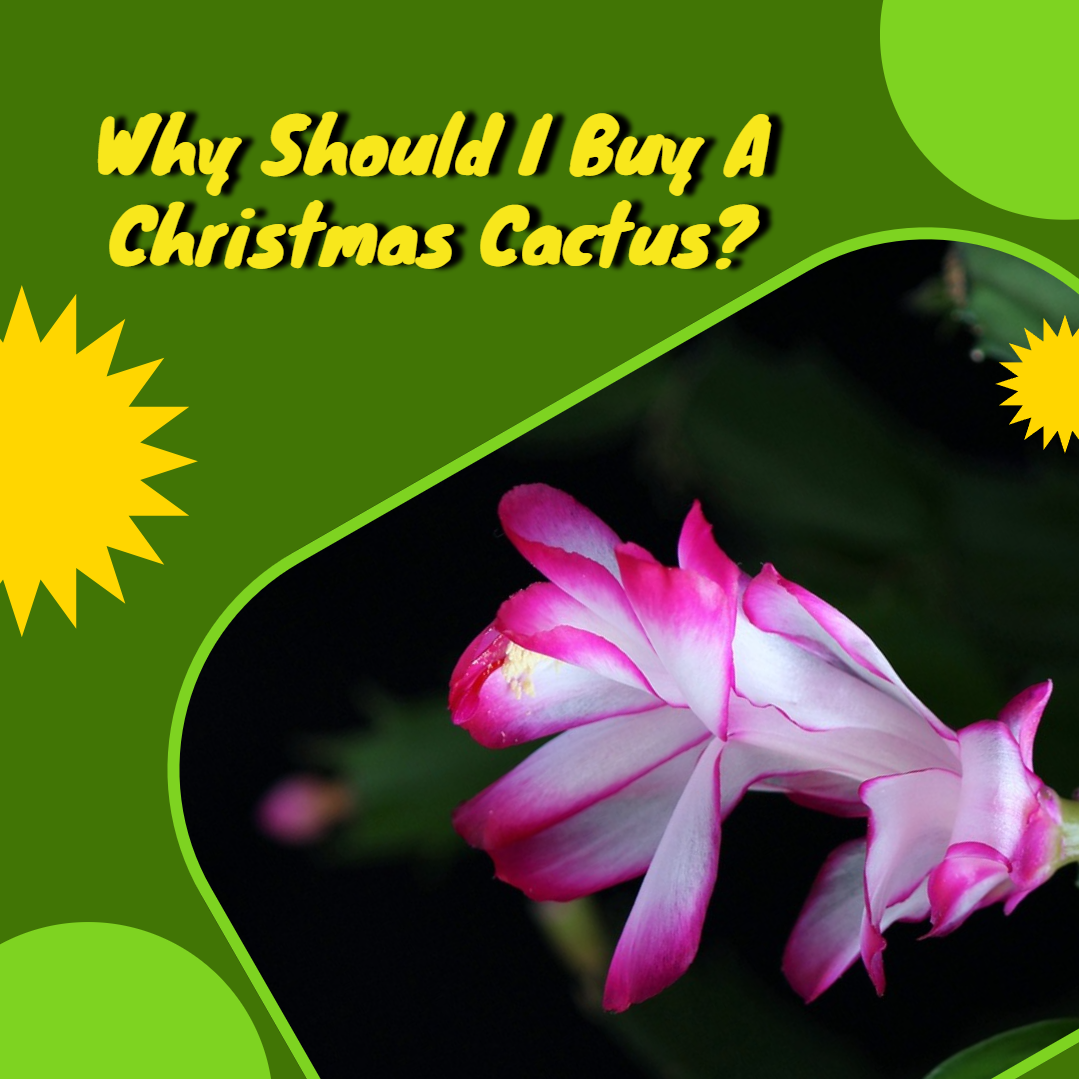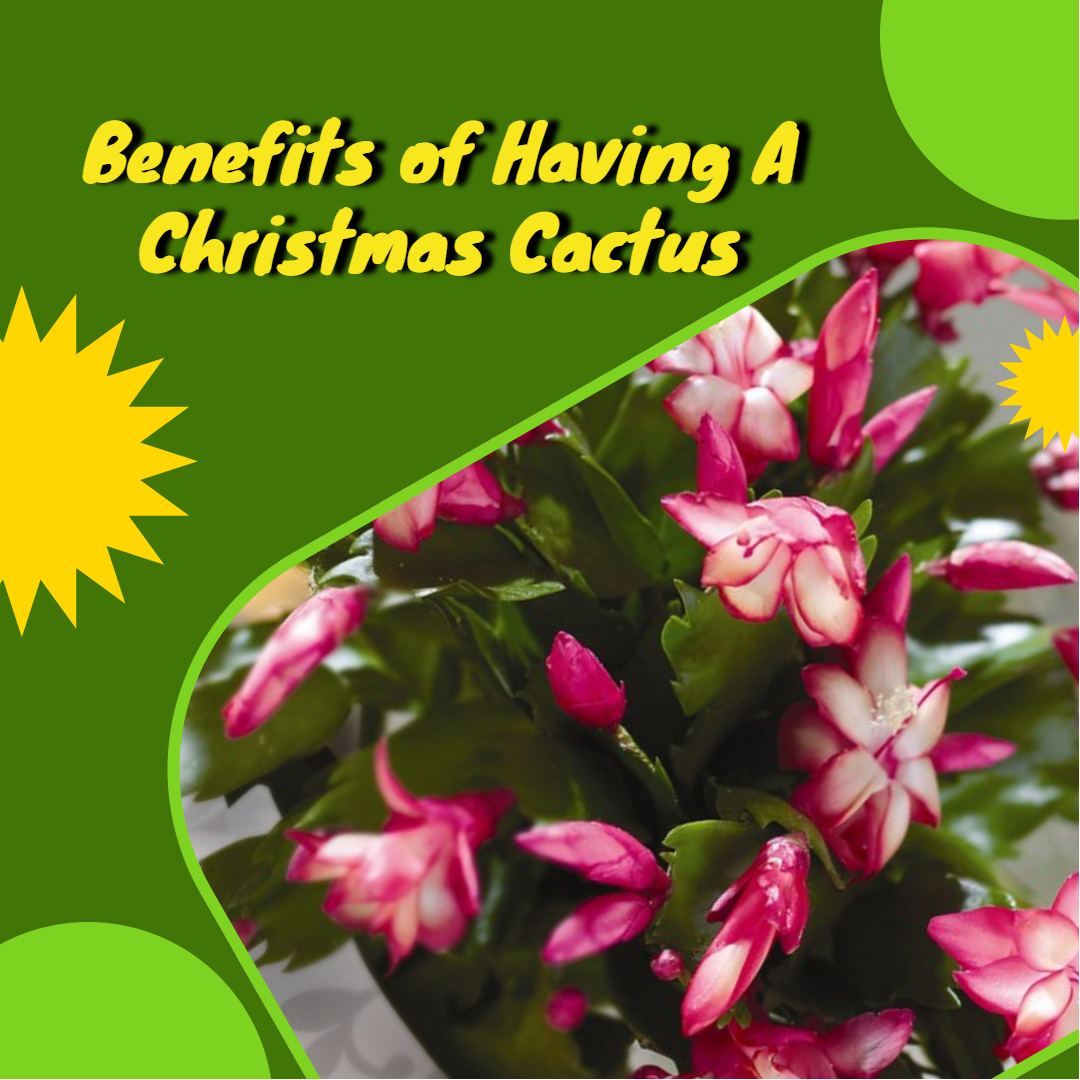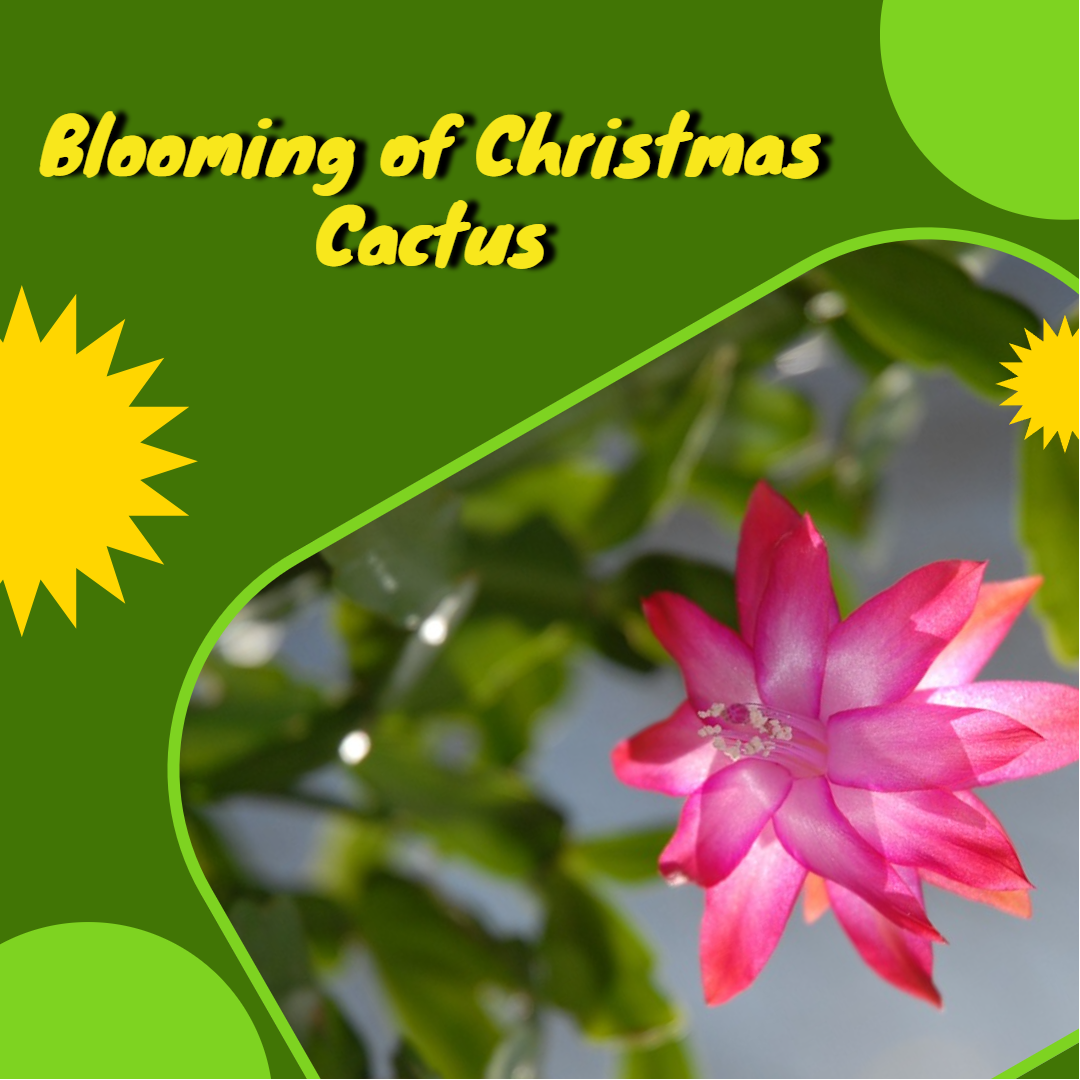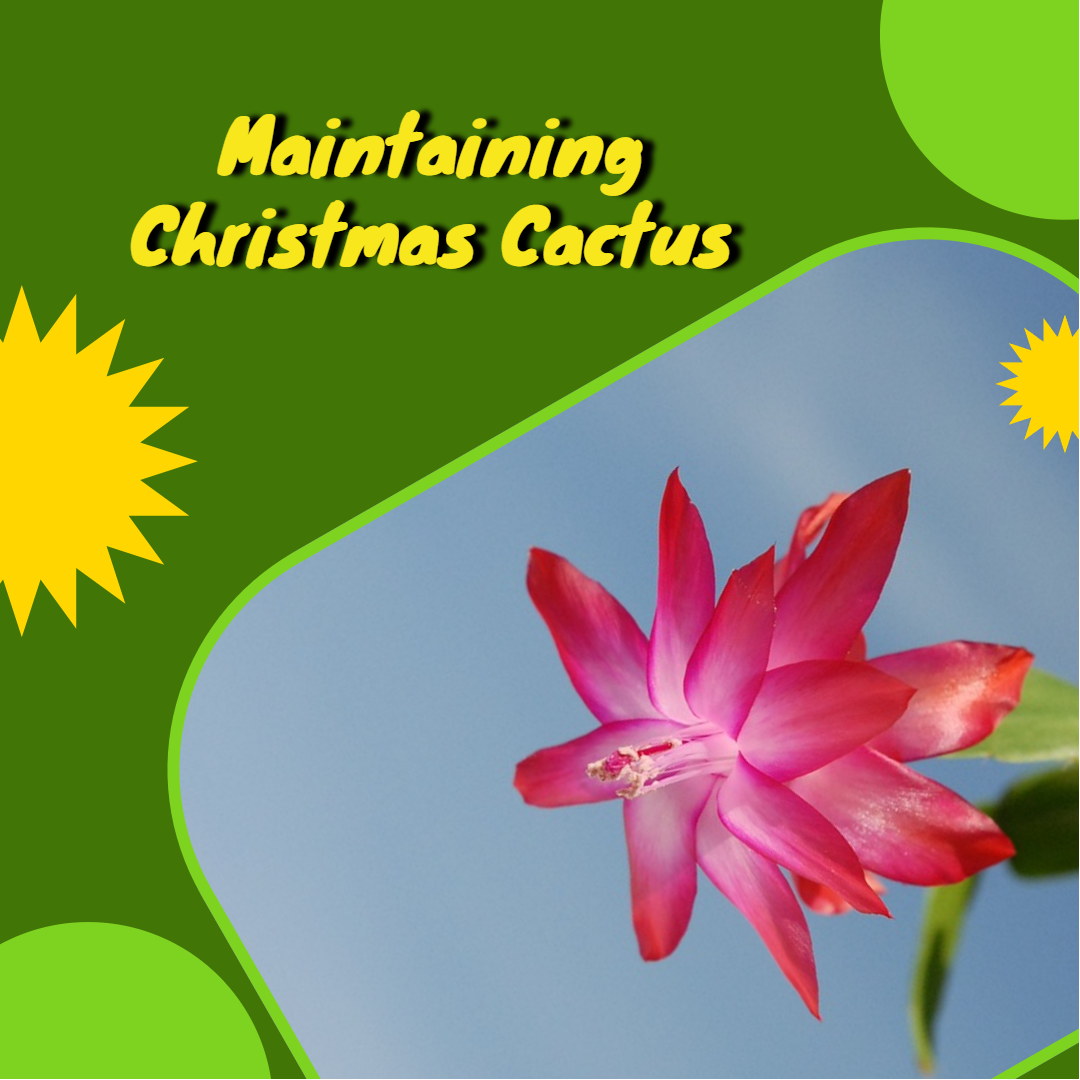HousePlantJoy is supported by our audience. When you purchase through one of our links, we may earn a small affiliate commission. As an Amazon Associate I earn from qualifying purchases. Your cost is not affected.
==================
A Comprehensive Guide to Encouraging Your Christmas Cactus to Bloom
Have you ever admired a Christmas cactus covered in beautiful flowers during the holidays? You might be wondering how to make your cactus do the same. It’s not as complicated as it looks! You can transform your plain cactus into a lovely holiday decoration with proper care and a few easy tricks. This guide will show you the steps and tips to make your Christmas cactus bloom with colorful flowers just in time for the festive season.
A Christmas Cactus, scientifically known as Schlumbergera, is a popular houseplant that adorns homes with vibrant blooms during the holiday season. This exotic plant, native to the Brazilian rainforests, is a holiday favorite due to its captivating blooms that add color to the dreary winter months. However, enticing a Christmas Cactus to bloom can become challenging for many gardeners. In this extensive guide, we will unravel how to encourage your Christmas Cactus to bloom and maintain its vibrant beauty all year round.
Why Should I Buy A Christmas Cactus?
You might consider buying a Christmas cactus (Schlumbergera) for several reasons. Here are some of the most common reasons people choose to have these plants:
Attractive Blooms
Let’s talk about why you might want to bring a Christmas cactus into your life. Well, first off, they’re stunning! These cacti produce gorgeous, colorful blooms that can light up your home, especially during the holiday season.
Low Maintenance
You don’t need to be a gardening pro to handle these plants. Christmas cacti are super low-maintenance. They’re pretty forgiving, so even if you start with plants, you won’t have difficulty caring for them.
Longevity
Here’s another cool thing: Christmas cacti can stick around for quite a while. With some care, they’ll be with you for years, and some people even pass them down through generations. It’s like a living family heirloom.
Indoor Plant
Since they’re indoor plants, you can enjoy their beauty all year round. They’re especially delightful in winter when outdoor gardening isn’t an option.
Holiday Tradition
Some folks have a tradition of decorating their homes with Christmas cacti during the holiday season. It’s a little touch that can make your home feel extra festive.
Air Purification
Now, these cacti are not just about looks. Like many indoor plants, they also help clean the air in your home. They’re like natural air purifiers, removing toxins and adding oxygen to your indoor environment.
Gift Giving
Looking for a unique gift idea? Christmas cacti make for thoughtful presents, especially during the holiday season. They’re living, decorative gifts that continue giving joy for years.
Symbolism
In some cultures, Christmas cacti represent positive sentiments like love, friendship, and good fortune. So, they’re not just plants; they’re a symbol of good vibes and positivity.
Transform your holiday plant display with Plant Magnets Eyes for Potted Plants, a sophisticated choice that brings out the true elegance of your Christmas Cactus. Elevate your seasonal decor with this touch of style. #ads #commissionsearned
Benefits of Having A Christmas Cactus
A Christmas cactus is a beautiful addition to your home for several reasons. These cacti are known for their vibrant, colorful blooms that bring a festive ambiance, especially during the holidays. The best part is their low maintenance; they’re forgiving and suitable for seasoned gardeners and newcomers. With proper care, Christmas cacti can last for years, becoming cherished family heirlooms. They thrive as indoor plants, providing year-round beauty, even in the coldest months when outdoor gardening isn’t an option.
Decorating with Christmas cacti is a heartwarming holiday tradition for many, and they also help improve indoor air quality by filtering toxins and adding oxygen. These cacti make unique and thoughtful gifts with cultural symbolism of love, friendship, and good fortune. A Christmas cactus is a lovely and meaningful addition to your home, offering beauty, tradition, and positive symbolism.
Understanding the Christmas Cactus
Before delving into the intricacies of making a Christmas Cactus bloom, it’s essential to understand the unique nature of this plant. Despite its name, the Christmas Cactus is not your typical desert-dwelling cactus. It is, in fact, a forest cactus that thrives in a tropical environment. Unlike its desert counterparts, the Christmas Cactus requires a richer, more organic potting mix, higher water, and bright, indirect light. Understanding these unique requirements is the first step in caring for and blooming your Christmas Cactus.
The Blooming Cycle
The Christmas Cactus, also known as a Thanksgiving Cactus or a holiday cactus, typically blooms from November to January. However, it can be encouraged to bloom again in the spring with the right care and conditions. A Christmas Cactus’s blooming cycle is influenced by watering, light, and temperature.
Differentiating Between Christmas, Thanksgiving, and Easter Cacti
While the care instructions are generally the same, it’s essential to differentiate between the Christmas, Thanksgiving, and Easter Cacti to adjust the blooming schedule accordingly. You can identify them based on when they bloom and their leaf structure.
Thanksgiving Cacti have pointy leaves and bloom near the Thanksgiving holiday, while Christmas Cacti have rounded leaves and bloom near Christmas. Easter Cacti bloom near Easter and have star-shaped flowers that distinguish them from their holiday counterparts.
Blooming of Christmas Cactus
To make your Christmas cactus bloom, give it bright light most of the year, but in late September or early October, it needs 12-14 hours of darkness each night for 4-6 weeks. Keep it in a 60-70°F (15-24°C) range, but cooler (50-55°F or 10-13°C) during the dark period. Water slightly less during the dark period and hold off on fertilizing.
Prune after flowering, avoid repotting close to blooming and ensure no pests are bothering your plant. These steps boost your chances of enjoying Christmas cactus blooms for the holiday season.
Creating the Ideal Conditions for Blooming
It would be best to create the conditions to entice your Christmas Cactus to bloom. This involves controlling the amount of light it receives, its environment’s temperature, and the watering frequency and amount.
Light and Darkness
During the fall and early winter, Christmas Cacti require twelve hours of darkness and twelve hours of indirect sunlight each day. This short-day, long-night environment is crucial for the plant to enter a flowering period. It’s daily to place the plant in a room that doesn’t get much artificial light after sunset, as even short periods of light can disrupt the darkness cycle required for blooming.
Temperature Control
Temperature plays a significant role in getting your Christmas Cactus to bloom. The ideal temperature for this plant is around 50-60 degrees Fahrenheit (10-15 degrees Celsius). To get this done, you may need to adjust your room’s heating system or find an excellent spot for your cactus. Keep the plant away from heat vents, radiators, and fireplaces to avoid temperature fluctuations that can disrupt the blooming process.
Watering
During dormancy, which is the period leading up to blooming, the Christmas Cactus requires minimal watering. Watering should only be done when the top inch of the soil feels dry to the touch. This minimal watering schedule forces the plant into dormancy, critical for blooming. However, once the buds appear, you should resume your usual watering schedule.
Fertilizing Your Christmas Cactus
Proper fertilization is another crucial aspect of getting your Christmas Cactus to bloom. During the growing season, from spring to fall, you should use a balanced fertilizer to nourish your plant. Stop all fertilization once fall arrives, as this can hinder the plant’s ability to bloom.
Propagating Your Christmas Cactus
If you want to multiply your Christmas Cactus, propagation is an easy and effective way. Cut off a piece of the stem and stick it into a small pot filled with soil. After a week or two, it will develop roots and begin to grow on its own. Early spring to late spring is the ideal time for propagation.
Troubleshooting Common Problems
Despite your best efforts, you may encounter common problems while trying to make your Christmas Cactus bloom. These include the plant, not flowering, the blooms falling off, or the cactus looking limp and wilted. These issues can often be resolved by adjusting the watering, light, and temperature conditions.
Bud Drop
Bud drop is a common issue faced by many gardeners. Inconsistent conditions, such as extremes in temperature or soil moisture levels can cause this. If your plant experiences a bud drop, stabilize its environment and provide consistent care.
Limp Christmas Cactus
If your Christmas Cactus appears limp and wilted, it may need more direct sunlight or mor water. Move the plant out of direct sun and make sure to keep the soil slightly damp.
Lack of Flowering
If your Christmas Cactus has stopped flowering entirely, it may need to receive enough darkness or more darkness or may be kept in a room that’s too warm. Make sure to provide the plant with at least twelve hours of darkness and keep it in a room with a temperature of around 50-60 degrees Fahrenheit.
Difference Between Thanksgiving
Cactus and Christmas Cactus
Thanksgiving cacti bloom around Thanksgiving (late November) and have claw-like leaf segments. Their flowers look like stars or daisies. In contrast, Christmas cacti bloom around Christmas and New Year’s, featuring softer, scalloped leaf segments and tubular, hanging flowers.
Thanksgiving or Christmas cactus enjoy similar care, needing indirect light, well-draining soil, and water when the top inch of soil dries out. You can also quickly propagate them from stem cuttings, and the good news is they’re non-toxic to people and pets. These distinctions help you identify and care for these lovely houseplants.
Easter Cactus vs Christmas Cactus
As the name suggests, Easter cacti like to bloom around Easter, so that’s a springtime show. They have cute, rounded leaves with scalloped edges and flowers that look symmetrical. Now, Christmas cacti they’re late bloomers, showing off their colorful flowers around Christmas, which makes them a great holiday decoration. Their leaves are slightly edgier with claw-like points, and their flowers have this relaxed hanging vibe.
When it comes to care, they both enjoy a similar lifestyle – think bright, indirect light, well-draining soil, and a sip of water when the top inch of soil dries out. Plus, you can make new plants from stem cuttings, like plant magic! And the bonus is that they’re safe for people and pets so that you can enjoy their beauty without any worries. These differences help you recognize and pamper these lovely houseplants throughout the year.
Maintaining Christmas Cactus
Maintaining a Christmas cactus is relatively straightforward, and it involves a few key considerations:
Light and Temperature: Your Christmas cactus enjoys indirect light, so no direct sun, please. It’s comfortable at temperatures between 60-70°F (15-24°C), but don’t let it get too chilly or drafty.
Watering: Keep the top inch of soil slightly dry before watering, and don’t overdo it. It might need more sips in the growing season (spring and summer), but it will ease up in the winter.
Humidity: Your cactus likes some moisture in the air. You can spritz it with water occasionally or place a little dish nearby.
Soil and Food: Make sure it’s in well-draining, slightly acidic soil. Feed it with a balanced, water-soluble fertilizer in spring and summer, but give it a break in the fall and winter.
Pruning and Repotting: A trim is okay if it’s getting leggy. Repot it every 2-3 years, mainly in spring.
Pest Patrol: Watch for unwanted guests like spider mites and mealybugs. If they show up, deal with them using remedies like neem oil or insecticidal soap.
Source: The Great Outdoors Garden Center
Elevate your holiday plant game with this chic bag that complements your Christmas Cactus, turning it into a festive centerpiece. Add a touch of style to your seasonal decor. #ads #commissionsearned
Get Your Christmas Cactus Now
With the right conditions and care, you can enjoy the beautiful blooms of your Christmas Cactus during the holiday season and throughout the year. Remember to provide the right light and temperature conditions, reduce watering during dormancy, and resume regular watering once buds appear. By understanding and meeting the unique needs of this tropical cactus, you can ensure its vibrant beauty lights up your home, making every day seem like Christmas.
FAQs
How do I care for a Christmas Cactus?
Provide bright, indirect light, well-draining soil, and water when the top inch of soil is dry. Keep it in a slightly cooler environment (around 50-55°F or 10-13°C) in the fall to encourage blooming.
Can I grow a Christmas Cactus from cuttings?
Yes, Christmas cacti are easily propagated from stem cuttings. Allow the cut ends to callus for a day or two, then plant them in well-draining soil.
How often should I water my Christmas Cactus?
Water when the top inch of soil is dry to the touch, usually about once a week. Be cautious not to overwater, as these cacti are susceptible to root rot.
What kind of light does a Christmas Cactus need?
Christmas cacti prefer bright, indirect light. They can tolerate some direct sunlight, especially in the morning or late afternoon, but too much direct sun can damage them.
Is the Christmas Cactus toxic to pets?
Christmas cacti are non-toxic to cats and dogs, making them safe for pet-friendly households.
How long do Christmas Cacti live?
With proper care, Christmas cacti can live for many years and continue to bloom annually, making them long-lasting houseplants.
What should I do if my Christmas Cactus is dropping its flower buds?
Flower bud drop can be caused by stress or improper care. Ensure consistent conditions, such as light, temperature, and watering, to prevent bud drop.
?✨ Sprinkle Some Holiday Magic with Christmas Cactus! ?✨
Make this season even more special with the vibrant, festive blooms of our Christmas Cactus. ?✨
Add a touch of nature’s beauty to your holiday decor, whether it’s on your table, windowsill, or as a delightful gift. ??
Easy to care for and pet-friendly, this cactus is the perfect addition to your home, bringing the spirit of the season to life. ??
Don’t forget to follow our socials:
Take advantage of this limited-time opportunity to welcome the holiday season with the warm and lasting beauty of a Christmas Cactus. ?❄️ Get yours today! ??


